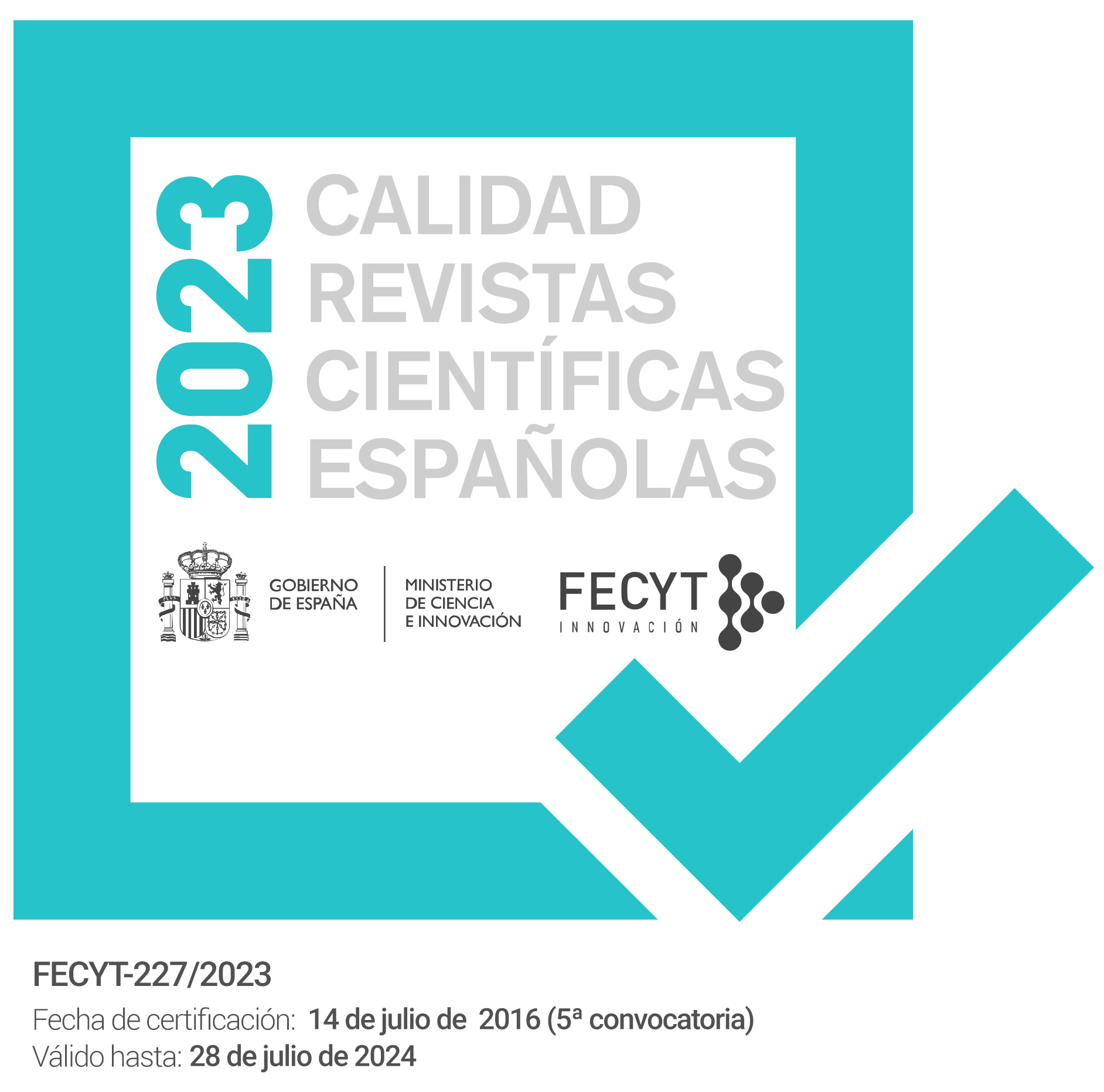Actividad de barrido de los radicales libres de Inula cappa
Palabras clave:
Inula cappa, Antioxidante, Ácido clorogénico, HPTLCResumen
Se evaluó la actividad antioxidante (AA) del extracto crudo y las fracciones derivadas de Inula cappa mediante elensayo de barrido de radicales α, α - difenil- ß-picrilhidracil (DPPH), ensayo de barrido de radicales superóxido, lamedición del poder reductor y la medición del efecto sobre la peroxidación lipídica en homogeneizado de hígado derata, y comparándolos con los del hidroxitolueno butilado (BHT), el ácido gálico (GA) y el ácido ascórbico (AscA).Los resultados muestran que el extracto metanólico y la fracción soluble en acetato presentan una mayor actividadantioxidante. También se determinó el contenido total fenólico, de taninos y fl avonoides. Se observa por primeravez el ácido clorogénico en esta planta, y se desarrolla un método de TLC densitométrica para la cuantifi cacióndel ácido clorogénico.Descargas
Citas
Manandhar NP, An inventory of some vegetable drug resources of Makawanpur district Nepal. Fitoterapia. 1995; 66: 231-238.
Saxena VK, Saroj J, Archana S, Antibacterial activity of essential oil from the flowers of Inula Cappa. Indian Drugs. 1981, 18, 33- 35.
Jain S, Saxena VK, Antibacterial activity of the essential oil from the leaves of Inula cappa. Indian Drugs. 1983; 20: 464 -466.
Taylor RSL, Hudson JB, Manandhar NP, Towers GHN, Antiviral activities of medicinal plants of southern Nepal. J. Ethnopharmacol. 1996; 53: 97-104.
Baruah NC, Sharma RP, Thyagarajan G, Herz W, Govindan SV, New Flavonoids from Inula cappa. Phytochemistry. 1979; 18: 2003-2006.
Bohlmann F, Ahmed M, Jakupovic J, Inositol angelates from Inula cappa. Phytochemistry. 1982; 21: 780-782.
Halliwell B, How to characterize an antioxidant: an update. In: Rice-Evans, C., Halliwell B, Lunt GG, (Eds.), Free Radical and Oxidative Stress: Environments, Drugs and Food Additives. Portland Press, 1995; pp. 73–102.
Breimer LH, Molecular mechanism of oxygen radical carcinogenesis and mutagensis: the role of DNA base damage. Mol. Carcinog. 1990; 3: 188–197.
Bandoniene D, Murkovic M, On-line HPLC–DPPH screening method for evaluation of radical scavenging phenols extracted from apples (Malus domestica L.). J. Agric. Food. Chem. 2002; 50: 2482–2487.
Fukumoto LR, Mazza G, Assessing antioxidant and prooxidant activities of phenolic compounds. J. Agric. Food Chem. 2000; 48: 3597–3604.
Singleton VL, Rossi Jr JA, Colorimetry of total phenolics with phosphomolybdic acid-phosphotungstic acid reagents. Am. J. Enol. Viticult. 1965; 16: 44–158.
William H, In: Official methods of analysis. Association of Official Agriculture Chemists, Washington DC, 1960; pp. 185.
Woisky RG, Salatino A, Analysis of propolis: some parameters and procedures for chemical quality control. Journal of Apiculture Research, 1998; 37: 99–105.
Navarro MC, Montilla MP, Martin A, Jimenez J, Utrilla MP, Free radical scavenger and antihepatotoxic activity of Rosamarinus tomentus. Planta Med. 1993; 59: 312-314.
Beauchamp C, Fridovich I, Superoxide dismutase: improved assays and an assay applicable to acrylamide gels. Anal. Biochem. 1971; 44: 276–287.
Tripathi YB, Chaurasia S, Tripathi E, Upadhyay A., Dubey GP, Bacopa monniera Linn. as an Antioxidant: Mechanism of action. Indian J. Exp. Biol. 1996; 34: 523-526.
Wagner H, Bladt S, In: Plant Drug Analysis- A Thin Layer Chromatography Atlas, Springer Verlag Berlin Heidelberg, 1996; pp. 210.
Dahl MK, Richardson T,. Photogeneration of superoxide anion in serum of bovine milk and in model systems containing riboflavin and amino acids. J. Dairy Sci. 1978; 61: 400–407.
Meyer AS, Isaksen A, Application of enzymes as food antioxidants. Trends Food Sci. Tech. 1995; 6: 300–304.
Kappus H, Lipid peroxidation—Mechanism and biological relevance. In: O. I. Aruoma, & B. Halliwell (Eds.), Free radicals and Food Additives. London: Taylor and Francis 1991.
Janero D, Malondialdehyde and thiobarbituric acid-reactivity as diagnostic indices of lipid peroxidation and peroxidative tissue injury. Free Radic. Biol. Med. 1990; 9: 515–540.
Descargas
Publicado
Cómo citar
Número
Sección
Licencia
Los artículos que se publican en esta revista están sujetos a los siguientes términos en relación a los derechos patrimoniales o de explotación:
- Los autores/as conservarán sus derechos de autor y garantizarán a la revista el derecho de primera publicación de su obra, la cual se distribuirá con una licencia Creative Commons BY-NC-SA 4.0 que permite a terceros reutilizar la obra siempre que se indique su autor, se cite la fuente original y no se haga un uso comercial de la misma.
- Los autores/as podrán adoptar otros acuerdos de licencia no exclusiva de distribución de la versión de la obra publicada (p. ej.: depositarla en un archivo telemático institucional o publicarla en un volumen monográfico) siempre que se indique la fuente original de su publicación.
- Se permite y recomienda a los autores/as difundir su obra a través de Internet (p. ej.: en repositorios institucionales o en su página web) antes y durante el proceso de envío, lo cual puede producir intercambios interesantes y aumentar las citas de la obra publicada. (Véase El efecto del acceso abierto).



















